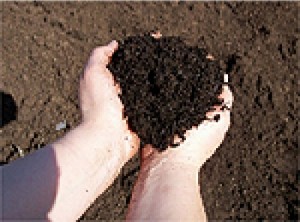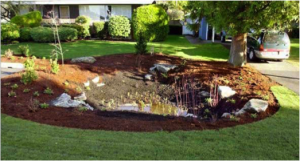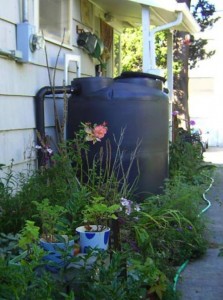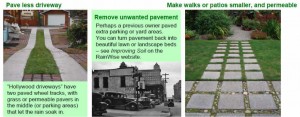Seattle Public Utilities’ RainWise program is helping property and home owners manage rainwater with strategies for controlling the quantity and quality of storm water on their land. Whether you live in Seattle or not, you can make a big difference by following RainWise tips.
Why be RainWise?
Before European settlement, the Northwest’s signature rainfall was slowed by needles and leaves, and gradually soaked into spongy soils held together by tree roots and understory plants.
Hundreds of thousands of people later, rain that falls on our many roofs, roads, driveways and compacted soils collects quickly, and then runs off into ditches and pipes. During big storms, the sheer volume of stormwater can flood homes, erode hillsides and streambanks, and cause sewer overflows, while carrying all the dirt, oil, metals and waste from our cars, lawns and pets to our lakes, salmon-spawning streams and swimming beaches. When large storms cause sewer overflows, chemicals and waste from our homes can also enter the Sound.
We can all help slow and clean the rain that runs off our homes and yards with simple and attractive projects that can improve water quality and save money, too!
Ways to be RainWise
We can collect and distribute runoff from our roofs, driveways and yards to help slow it, spread it, filter it, and soak it in. Below are ideas for making our homes and yards act more like a forest in absorbing and diverting stormwater from local lakes, creeks, streets and sewers.
Build a rain garden
Rain gardens are hollow depressions (6-12 inches deep) that can hold runoff from roofs and driveways and allow it to soak into soil gradually. Landscape your rain garden with plants that complement your yard and are suited to the sun, soil and moisture conditions found there. Amending your soil with compost to a depth of one or two feet helps the rainwater soak in. By slowing and filtering roof or driveway runoff, rain gardens help protect our streams, reduce sewer overflows and flooding, and add beauty to your yard.
Install a cistern
During peak storm events, cisterns (big rain barrels that hold 200-1000 gallons or more) can retain water, reducing storm runoff that erodes and scours our streams and causes sewer overflows. Cisterns can also store water for watering your lawn and garden in summer. To get these benefits, leave the drain valve open October to May, so that heavy rains fill the cistern and then slowly drain out (before the next storm). Then in mid-May, as rains diminish, you can close the drain so your cistern fills to store water for summer landscape irrigation. Open the drain again come fall – it’s that easy!
Reduce the paved area around your home
Conventional pavement and roofs are called “impervious surfaces” because they don’t let rain soak into the ground. Instead they collect rainfall, and funnel it to storm drains or combined storm/sanitary sewers (depending on where you live), which in big storms can contribute to sewer overflows, local flooding, or stream erosion. You can mitigate these impacts by reducing the amount of paved area around your home, and by choosing permeable (porous) paving options for driveways, walks and patios that let the rain soak through into the soil.
Improve your soil

Healthy, absorbent soil slows and reduces runoff.
Improving your soil with compost and mulch feeds beneficial organisms that create structure and pore spaces in your soil, so that rainwater can soak into it easily. Healthy, absorbent soil slows and reduces runoff from your yard during big storms, which can curb flooding, sewer overflows, and erosion. Improving your soil can also save you money by reducing the need for summer watering, because your plants grow deeper roots and your soil holds more water. Healthier plants have fewer pest and disease problems and need less fertilizer. So you’ll need fewer chemicals, which is good for the health of your family and the planet. Beneficial soil organisms also break down pollutants, and help move carbon dioxide (a greenhouse gas) from the atmosphere into long-term storage in the soil.
Capturing rainwater and controlling runoff from our properties can help improve the water quality of our surrounding lakes, streams, rivers and Puget Sound. For more information about RainWise practices, visit the City of Seattle’s RainWise website at www.seattle.gov/util/rainwise.













